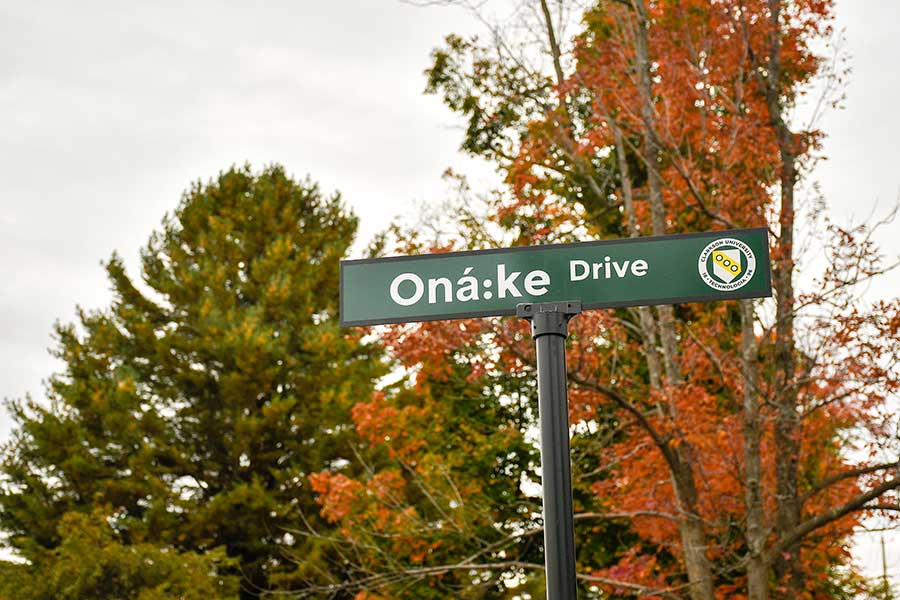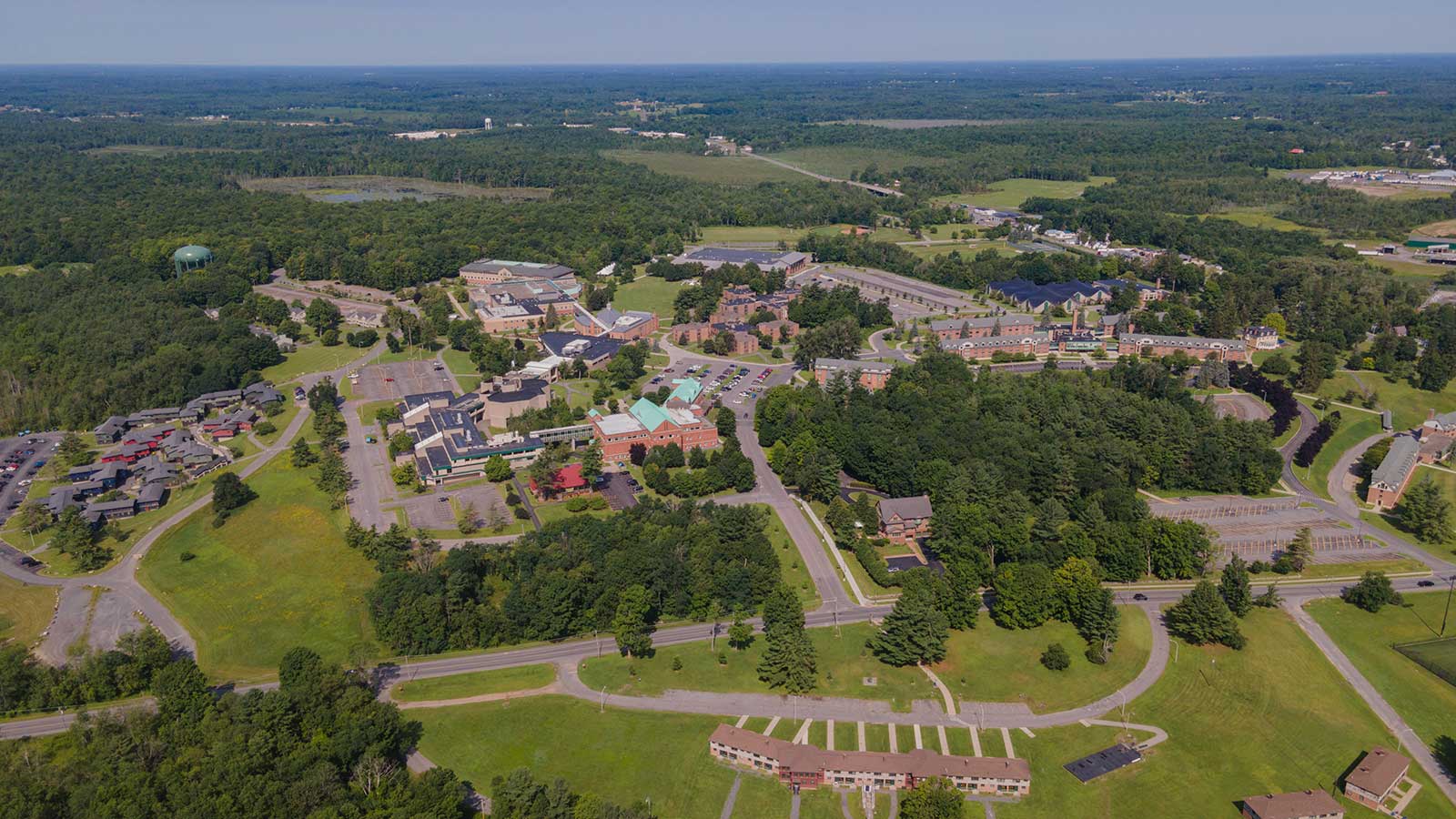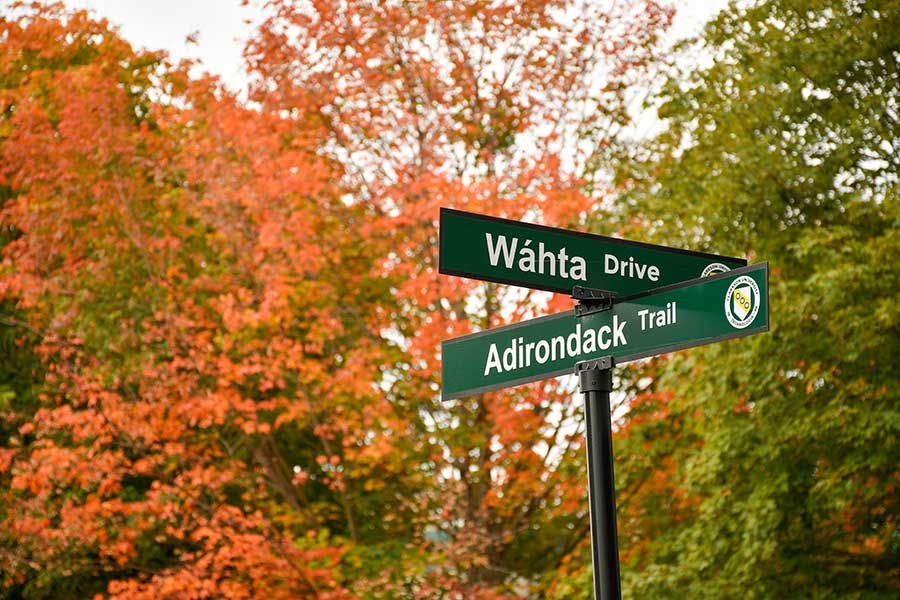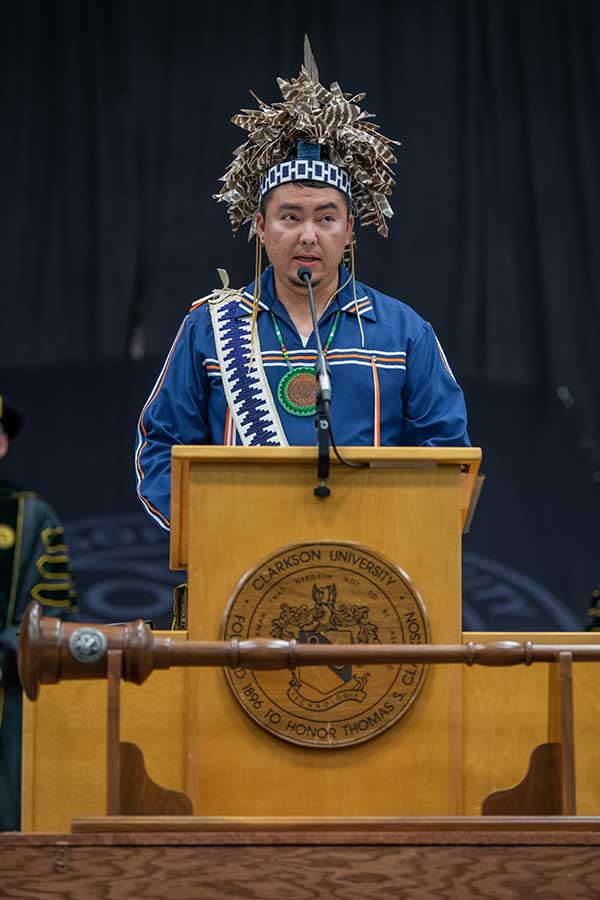
Land Acknowledgement

Grateful Beginnings
Before official Clarkson ceremonies begin, the Faculty Senate, Administrative Council and Student Association have endorsed for the statement below to be read expressing gratitude and appreciation for the unique and enduring relationship between Indigenous Peoples and their traditional territories.
"As the Staff, Faculty and Students of the Clarkson Community, we're grateful for the opportunity to meet here and we thank all the generations of people who have taken care of this land before us. We acknowledge we are meeting on the traditional territory of the Akwesasne Mohawk and their ancestors. These lands and waterways connect to the vast traditional areas of the Haudenosaunee, Algonquin, Huron-Wendat, and Abenaki Peoples. We recognize and deeply appreciate their connection to this place.
These traditional territories were never wholly surrendered and were only claimed by competing French and British Crowns, and later New York State.
As we move towards healing past injustices, we must acknowledge the wrongs that have been done and work towards a unified path of co-existence and prosperity. We also recognize the contributions of the Akwesasne Mohawk, Haudenosaunee, and other Indigenous peoples have made, both in shaping and strengthening this community in particular, and other territories within the country as a whole."
“Acknowledgment by itself is a small gesture. It becomes meaningful when coupled with authentic relationships and informed action. But this beginning can be an opening to greater public consciousness of Native sovereignty and cultural rights, a step toward equitable relationship and reconciliation. Acknowledgment is a simple, powerful way of showing respect and a step toward correcting the stories and practices that erase Indigenous people’s history and culture and toward inviting and honoring the truth.”
-U.S. Department of Arts and Culture
Potsdam Campus Street Signage
Clarkson University is committed to honoring and recognizing the Indigenous Peoples’ that make up our community students, staff, faculty and partnerships. The Haudenosaunee, Algonquin, Huron-Wendat, Mahican and Abenaki Peoples all have an impact on all of our local campuses.
As part of that commitment Clarkson University Potsdam Hill Campus has recently added street names that come with Indigenous meaning and pronunciation.
Oná:ke Drive
(Oh-nAh-gee)

Kanien’kehá (Mohawk) language word for Canoe. Referring to the traditional canoe made from birch bark and sealed with pine pitch the canoe would be light weight and easy transportation along the regions many streams, rivers and lakes for the Indigenous Peoples of the Eastern Woodlands.

Wáh:ta Drive
(Wah-Dah)
Kanien’kehá (Mohawk) language word for Maple. Referring to the maple trees in the region that act as leaders by turning colors to signal the change of seasons. In the spring thaw the trees would be tapped for their maple sap which would then be boiled down into maple syrup by the Indigenous Peoples of the Eastern Woodlands.
Adirondack
Atiró:taks
(Ah-de-LOON-da-ks)
Kanien’kehá (Mohawk) language word for ‘bark eaters’. Referring to the group of Algonquin people that lived in the high mountains and would sustain themselves by gathering food from the environment including select barks and herbs. Later this term would be affixed to maps of the region and would become known as the Adirondacks today.
Coordinator of Indigenous Community Outreach and Support

Clarkson University's Coordinator of Indigenous Community Outreach and Support is Phillip White-Cree, and is an instructor of history in the Department of Arts, Culture & Technology.
White-Cree was born and raised in the traditional Kanienʼkehá꞉ka (Mohawk) territory of Akwesasne and is a member of the Turtle Clan. Growing up in Akwesasne, he received his education in both New York and Ontario, graduating from Cornwall Collegiate and Vocational School in 2006.
He attended Carleton University and then transferred to the Syracuse University School of Architecture where he was awarded his bachelor of architecture degree cum laude in 2012 with a thesis focused on Haudenosaunee sovereignty and architecture.
Since then, White-Cree had worked serving his home community at the Mohawk Council of Akwesasne in numerous departments, like health, education and technical services. For the last eight years, he has worked within the Aboriginal Rights and Research Office as a senior researcher, focusing on land claims, historical research, cultural training, and archeology. Currently, he has been hired to be the Coordinator of Indigenous Support and Outreach under the Diversity, Equity and Inclusion Office (DEI) while still being an Instructor of History within the Department of Humanities and Social Sciences. Phillip is also the Advisor for the American Indian Science and Engineering Society (AISES)."
You can reach Philip at pwhitecr@clarkson.edu or by phone at 315-268-3984.
